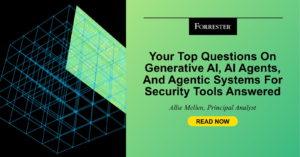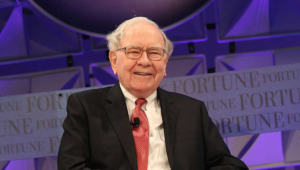From Emerging Tech to AI: My New Forrester Mission
After three years dedicated to Forrester’s emerging technology portfolio, I’m excited to embark on a new chapter as VP of emerging technology and principal analyst. In this role, I’ll be focusing much of my time on researching the transformative impact of artificial intelligence as part of Forrester’s new Data, AI & Analytics service. While AI has been a part of my research, this transition allows me to dedicate more focus to helping clients generate real, measurable value from their AI investments. AI Computing: A New Era Of Human Empowerment A pivotal moment in my work came with the publication of Forrester’s landmark report, Change the Interface; Change the World, in which we lay out how AI will reshape the world over the next 20 years. This report is not just a statement on technology’s future; it also marks the beginning of a new era of human empowerment, where interfaces recognize human intention and agents work autonomously on our behalf. Together with my colleague Ted Schadler, I will soon release a follow-up report on the investment strategies that companies must embrace to thrive in the era of AI computing. This work will provide actionable insights to help organizations align their investments with future innovations. Cutting Through The AI Fog With Value Management The AI landscape is full of potential, but it’s also overwhelming. New technologies emerge almost daily, leaving business leaders wondering, Am I doing enough? Did I make the right investments? This flood of information can lead to confusion — what I call the “AI fog.” Cutting through this is critical for staying competitive in this new era of AI computing, and the key lies in AI value management. My early research shows that firms taking a more structured approach tend to grow faster. But many organizations still struggle to quantify AI’s impact on business outcomes. My upcoming research will explore what drives the growth of leaders and how firms can replicate it. My goal is to provide frameworks to assess the total picture of AI benefits, costs, and risks, helping firms develop this deep understanding. Pushing Research Boundaries On AI And Quantum Computing Tech Beyond AI computing and value, I will continue leading Forrester’s research at the frontier of AI technologies. My focus includes studying AI agents and their progression toward artificial general intelligence (AGI). This research will provide insight into the short-, medium-, and long-term implications of AGI — a future in which AI systems can perform any intellectual tasks that were once reserved only for humans, raising important questions about AI safety and ethics. Although my primary focus is now on AI, I will continue tracking quantum computing, a technology I’ve been researching for over a decade. I will help firms understand how quantum computing will move from theory to practical applications, ensuring that they are prepared for its potential disruptions. Continuing To Lead Emerging Technology Research I will also continue to lead Forrester’s emerging technology research, a critical area that helps organizations stay ahead of disruptive innovation. Over the past three years, we’ve developed a dedicated portfolio of reports on the top 10 and next 10 emerging technologies. To make this research more accessible, we’ve launched an emerging technology hub for Forrester Decisions clients. Additionally, we’ve collaborated with our internal generative AI team to enhance our AI-driven insights. Our genAI-powered assistant, Izola, is now available in beta, designed to help clients explore emerging technology use cases and trends. Looking ahead, my goal is to continue supporting the emerging technology process, publish our flagship “top emerging technologies” reports this summer, and collaborate with our team to innovate digital experiences, including enhancing genAI capabilities. Let’s Connect As I transition into this new role, I’m excited to continue delivering insights that help our clients navigate the technological shifts shaping the future. Clients, consider scheduling a guidance session or inquiry with me to discuss any of these research areas and what I’m learning along the way. Clients and nonclients alike, I’m always eager to hear compelling stories from firms. Please feel free to reach out via LinkedIn or contact your Forrester account representative. source
From Emerging Tech to AI: My New Forrester Mission Read More »













